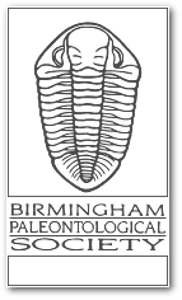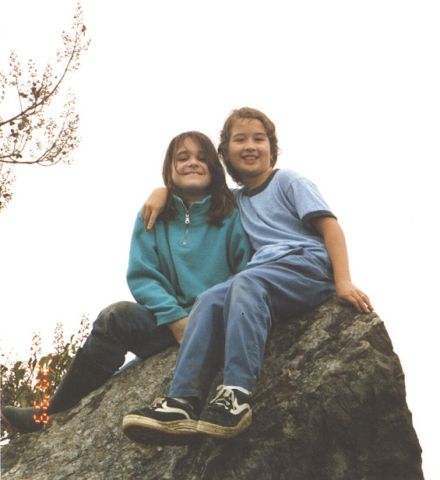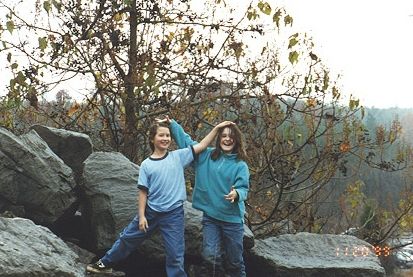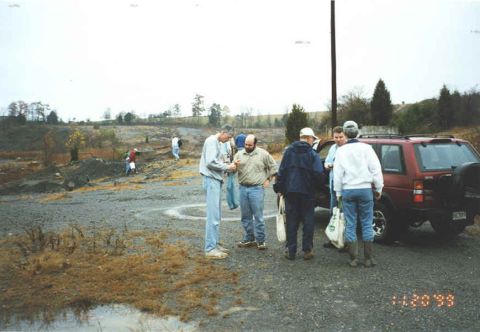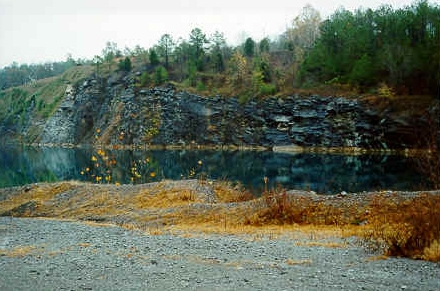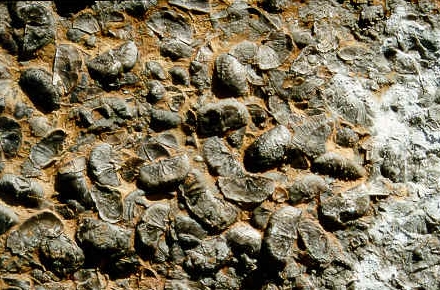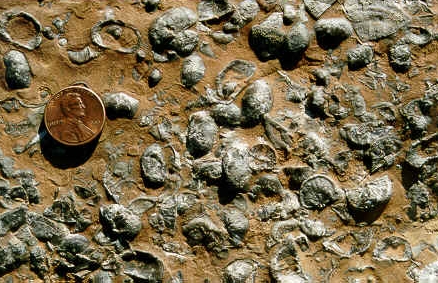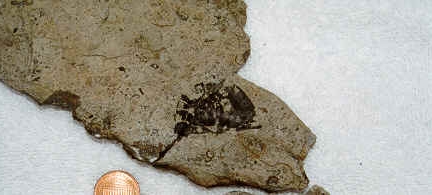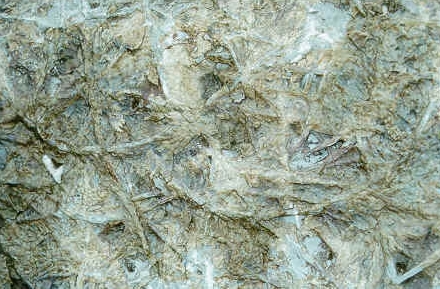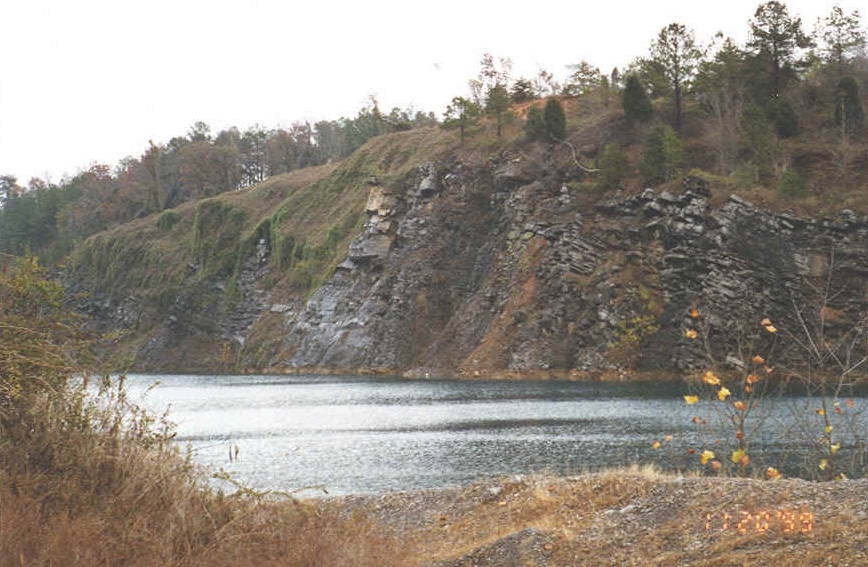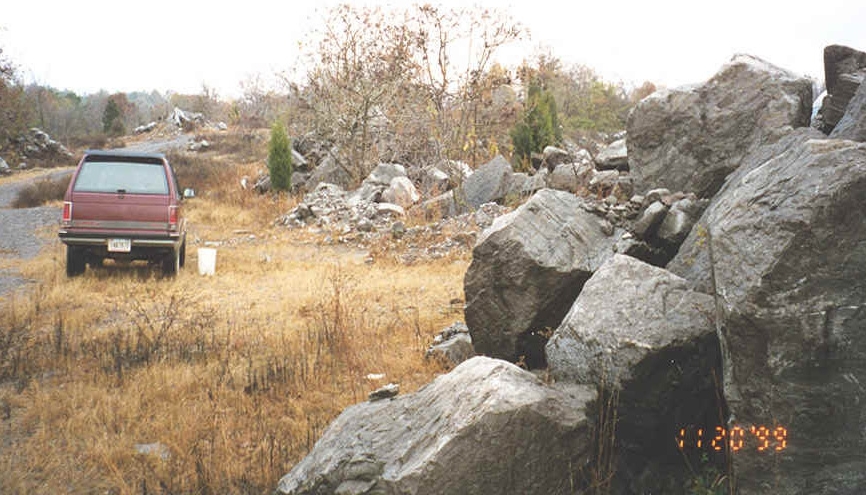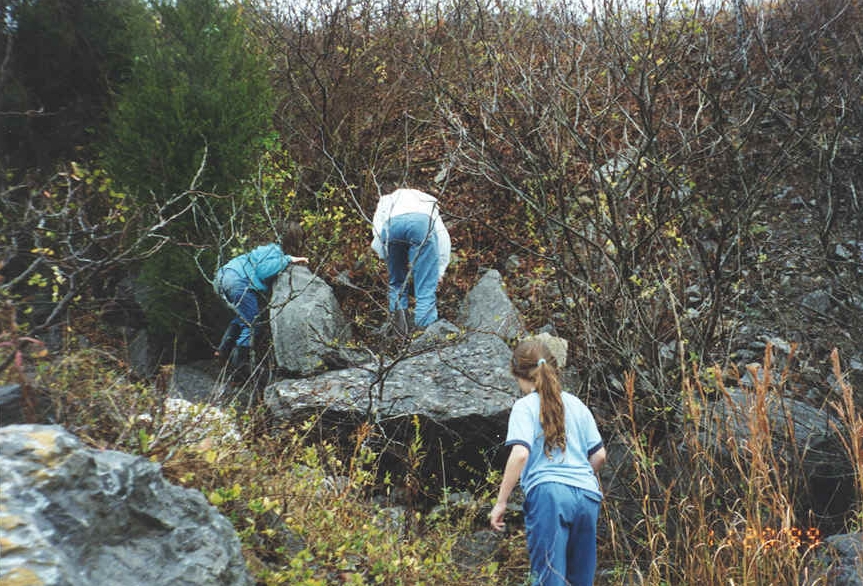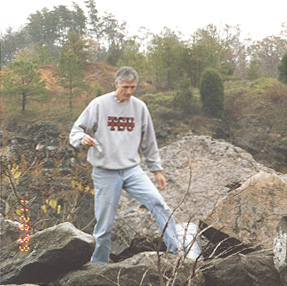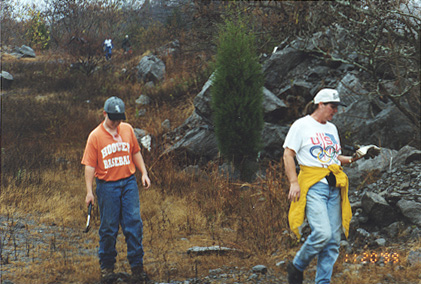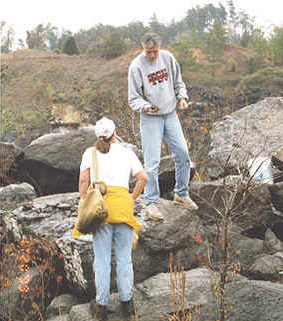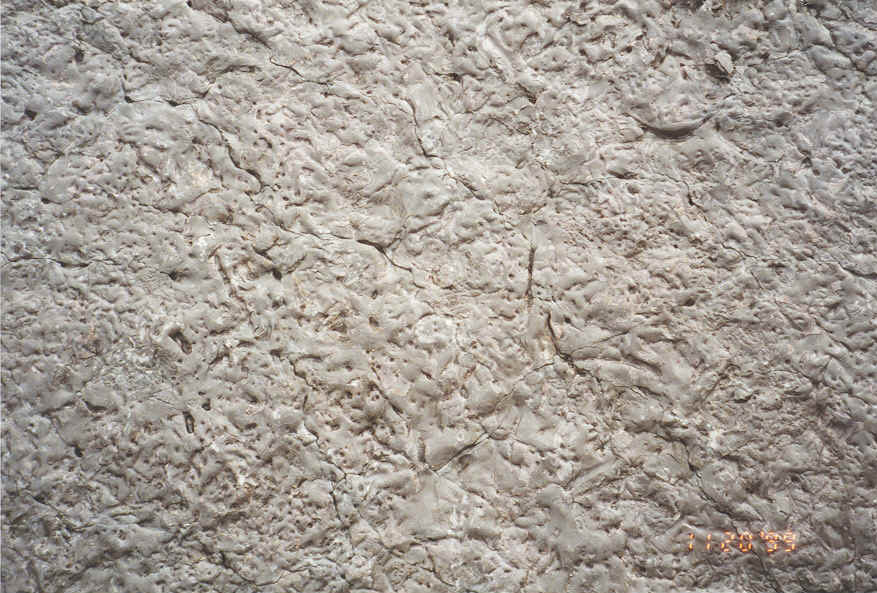Bibb
February 18, 2006 - Pennsylvanian Fossils, Bibb and Shelby Co, AL
Another trip not put off for "rain, nor sleet, nor snow etc." Near-freezing temperatures, 100% chance of rain, an overcast sky and icy drizzle to begin the day were all on the menu at the BPS field trip in February to strip-mine sites in Bibb and Shelby county. To give you an idea of what we decided to brave, our host at our first stop, an active coal washing site, didn't show up until we called him, because he thought that nobody in their right mind would be out there! Well, you know, as Nancy remarked, "Once you start finding things, you forget how cold you are!" And this from somebody wearing a "Teenage ninja fossil-hunter suit." Of course, all were outfitted in attractive hard-hats, an MSHA requirement for visits to active mining sites. Just try keeping those on while bending over to find bits and pieces of neat stuff!!! Next time, we should bring little elastic strings to hold them on! Perhaps we should have been wearing them on the parts of our anatomy most-often turned towards the sky!
So, there were the most hard-core of the BPS'ers, happily finding plenty of plant fossils. Our first site was at a coal washing facility, where a variety of plant material was found, including numerous stem impressions, casts, and parts of tree ferns. Excited cries, of "Wow, look at this one!" made it hard to leave for the next site, an abandoned mine a few miles back in the woods, but, the word that we could lose the hardhats, among other attractions, won the gang over.
The second site was in the boonies, even for that area of the state, way down a long dirt road through the woods, through a locked gate, near where a prison used to house people who were busting rocks against their will, so to speak. This second site was very prolific, and members found tree ferns, calamites, and a few tree fern seeds. Some very nice specimens were found, including new "doorstops" for some members.
It was decided to move on to a third site, but the road was too muddy for us to drive up to it. This must be a good place, though, because at least one nice specimen was found near the entrance: a beautiful little silhouette of lacy fern leaves from so very long ago.
One more stop, to look at a site containing remains of bark impressions and calamites casts. There were some nice tree fern specimens in very fragile, easily crumbled rock. A number of fossils were in rocks too large to lug home, and our hands were too frozen, anyhow! Then we finally decided it was time to think about heading home for hot baths, hot laundry, hot food and a nice, long rest. Maybe our next trip will be graced with sunshine and gentle breezes!
--Edited by Vicki Lais
(photos courtesy Vicki Lais)
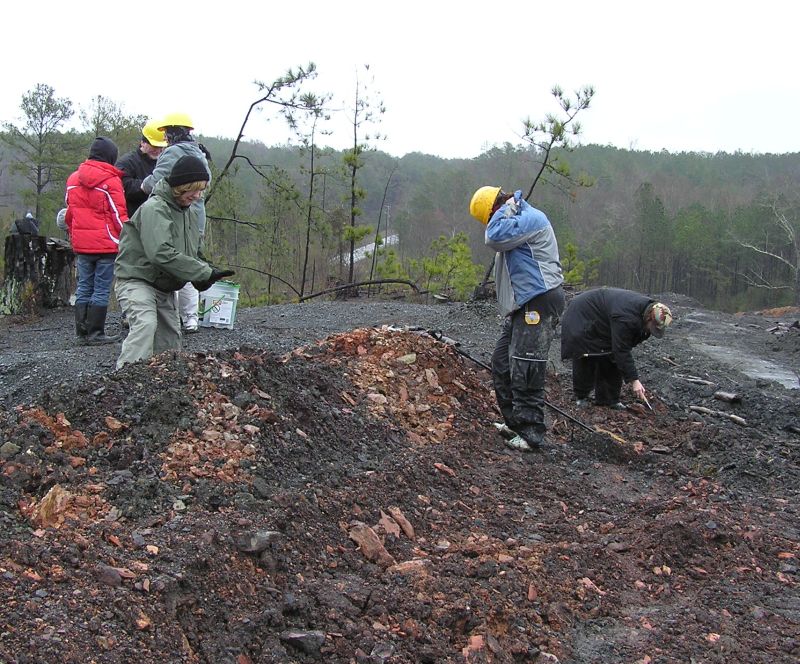
Some of the group on top of a spoil pile.
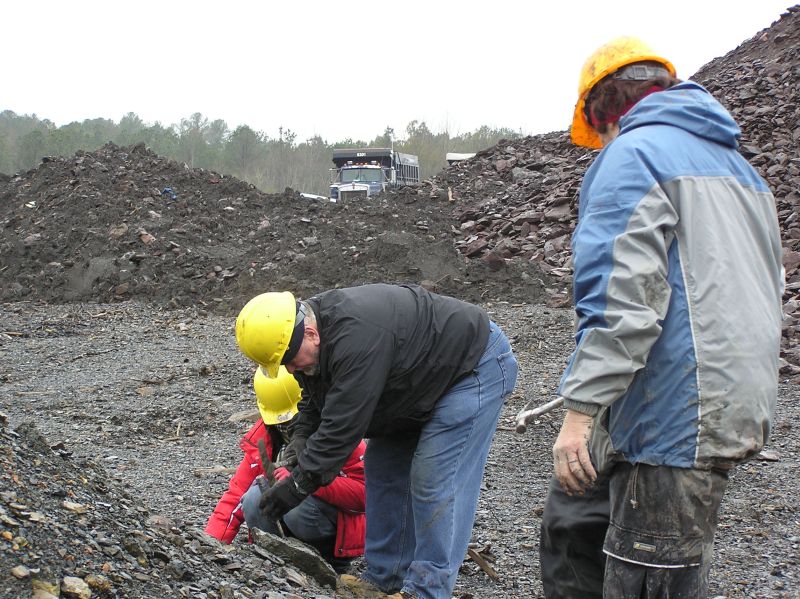
Greg demonstrating how to get the fossil out safely without taking home the entire rock.
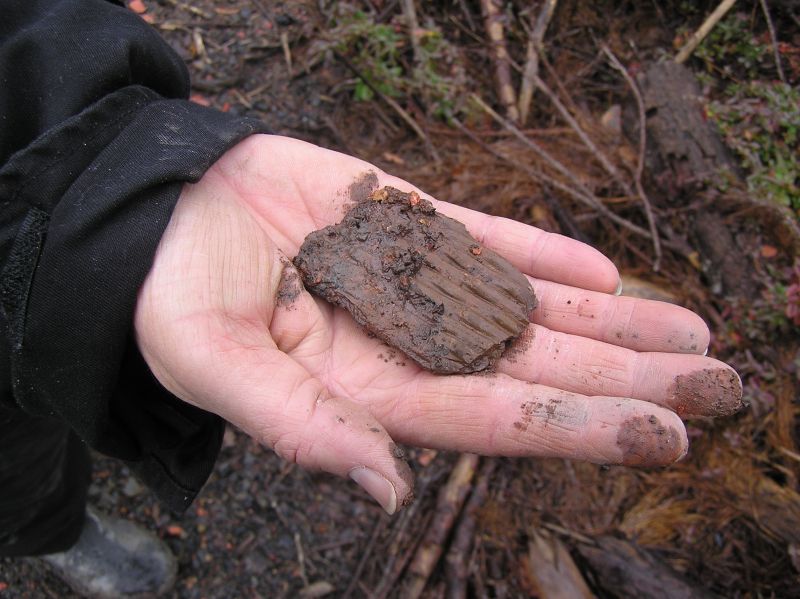
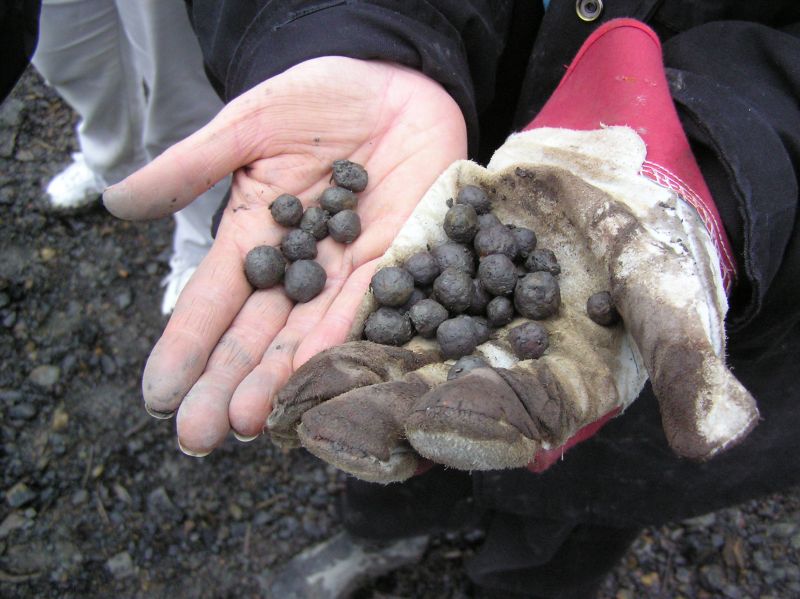
Small balls of iron ore used in the ironmaking process. These apparently date to the 1940's and 50's when coal mines in the area were in full force and trains carried various materials between the mines and the steel plants.
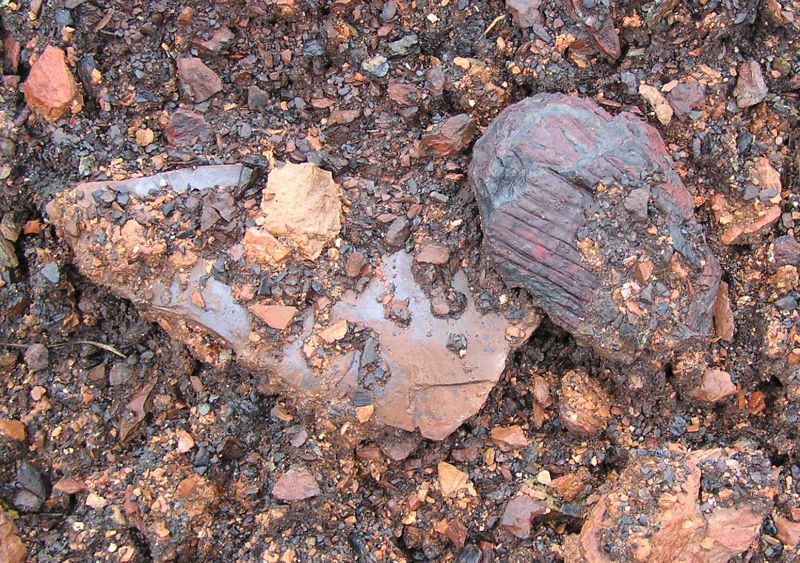
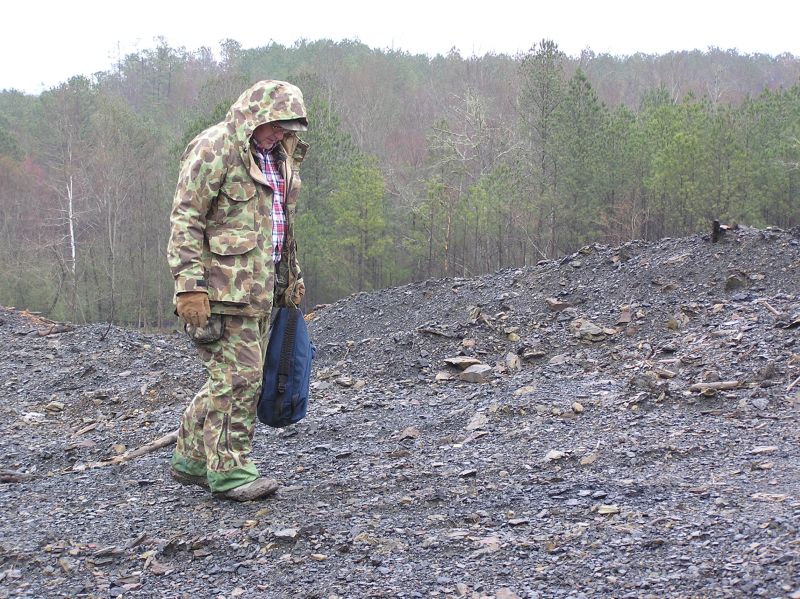
Bill searching for more fossils.
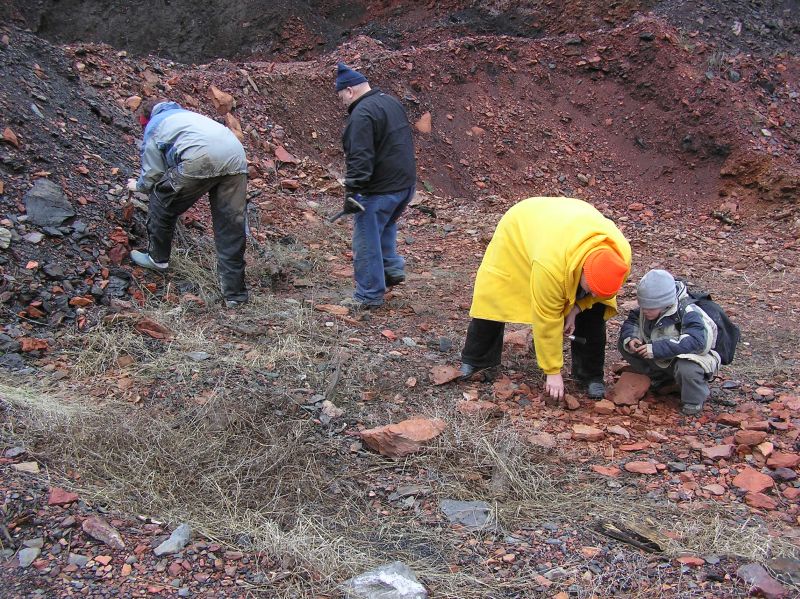
At our second site, many of the rocks were red rather than gray. This was due to the rocks being "burned" at some time in the past, perhaps with a smouldering coal fire.
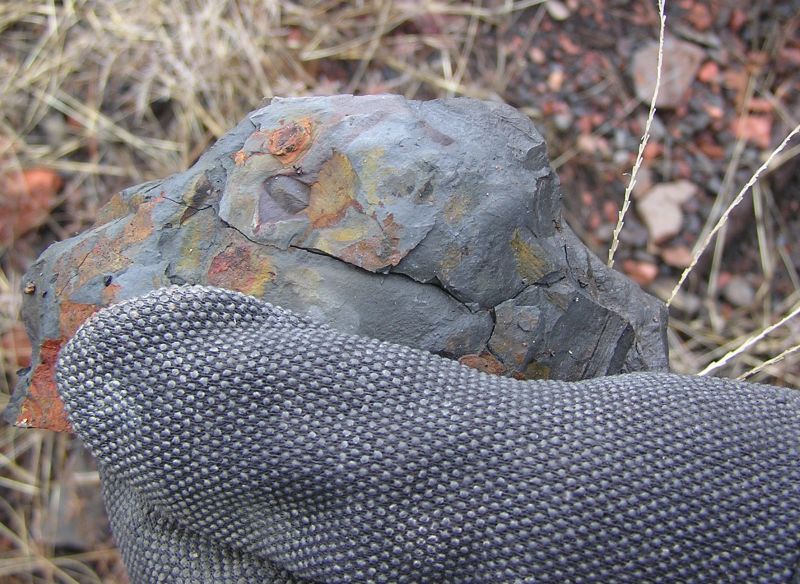
Nice "tree fern" seed fossil found by Greg.
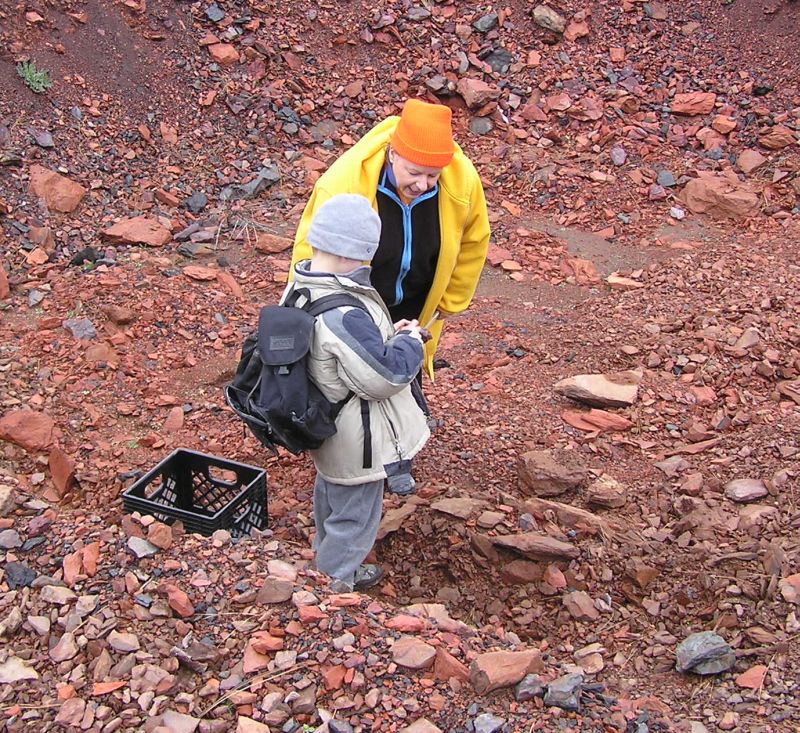
Leisa helping identify the fossil Ryan has found.
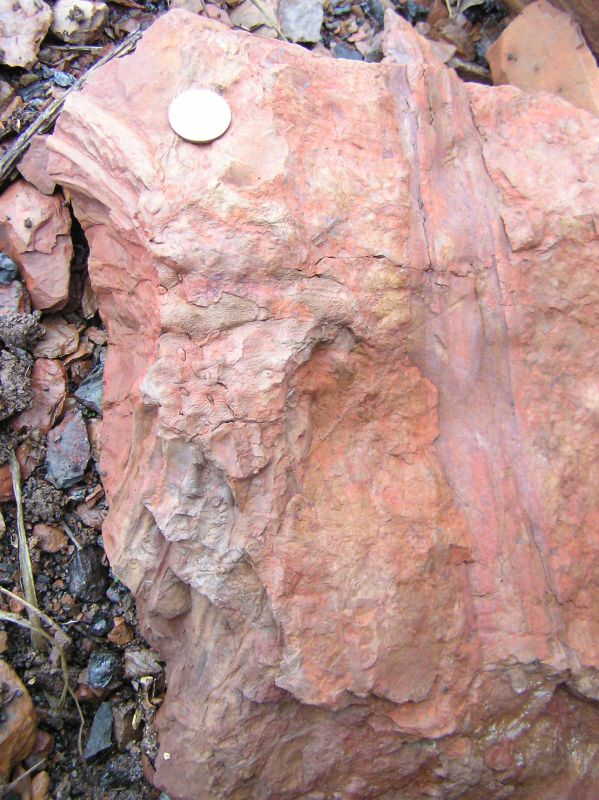
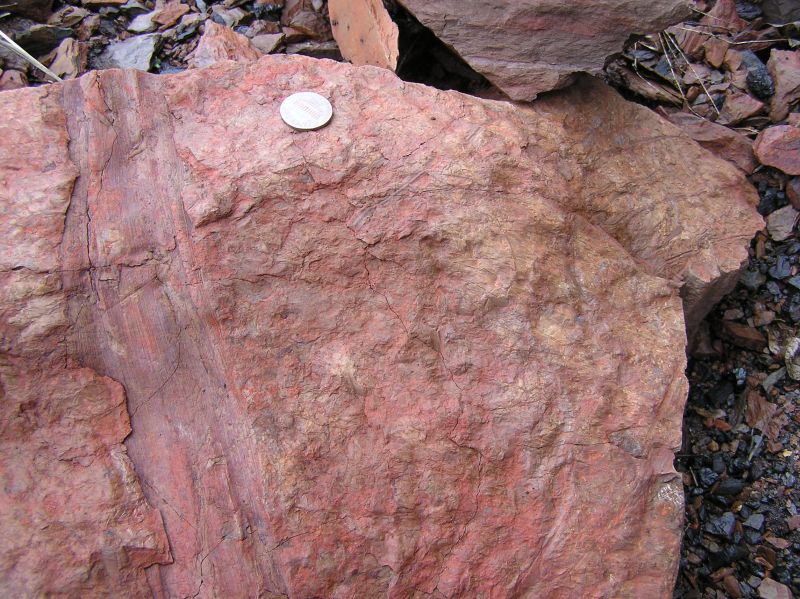
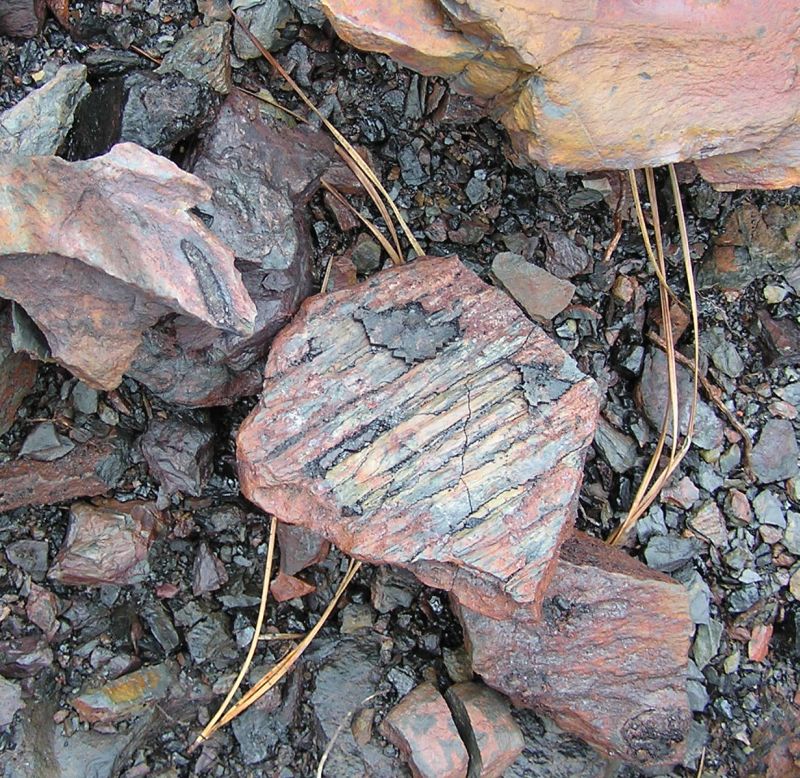
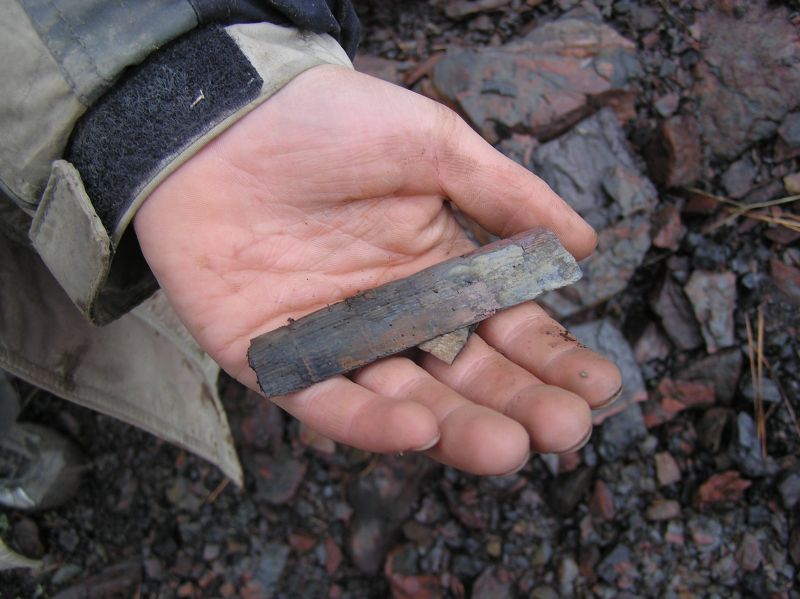
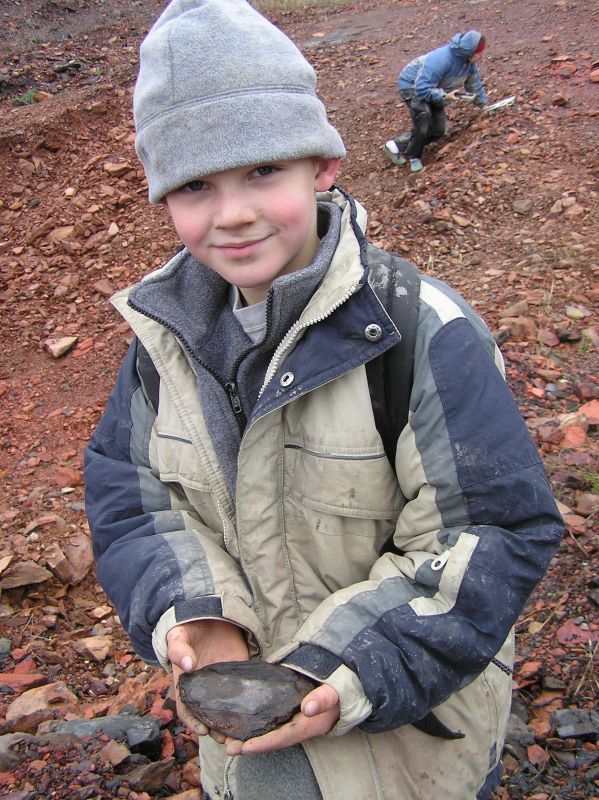
Ryan has found a nice fossil.
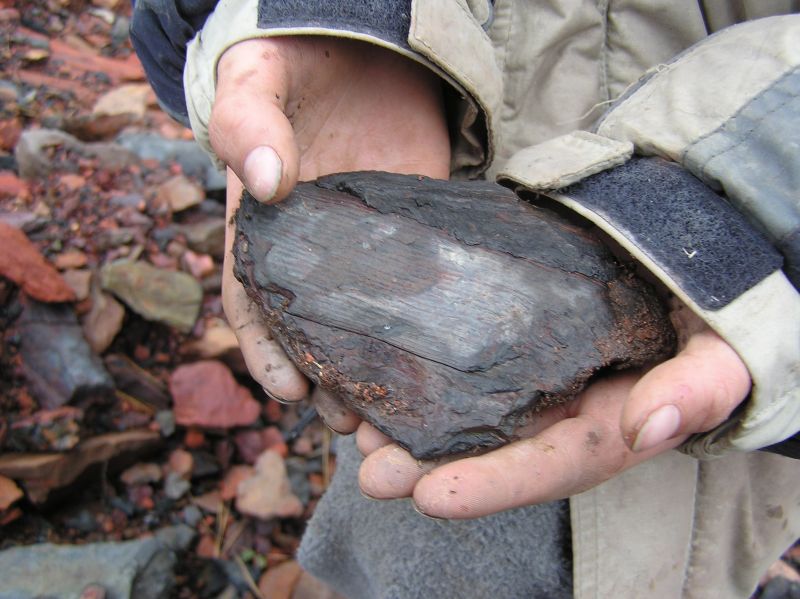
A closer look at the calamites Ryan has found.
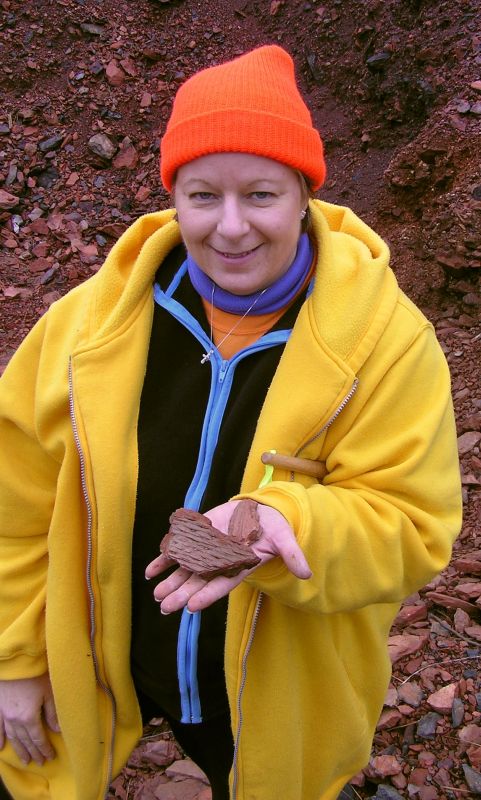
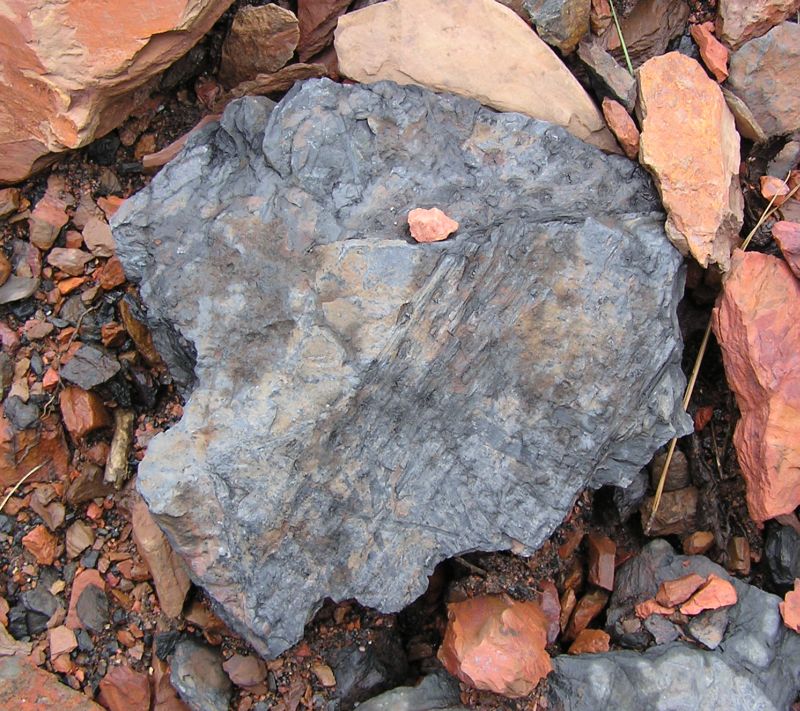
Stigmaria (roots of a Lycopod, possibly Lepidodendron)
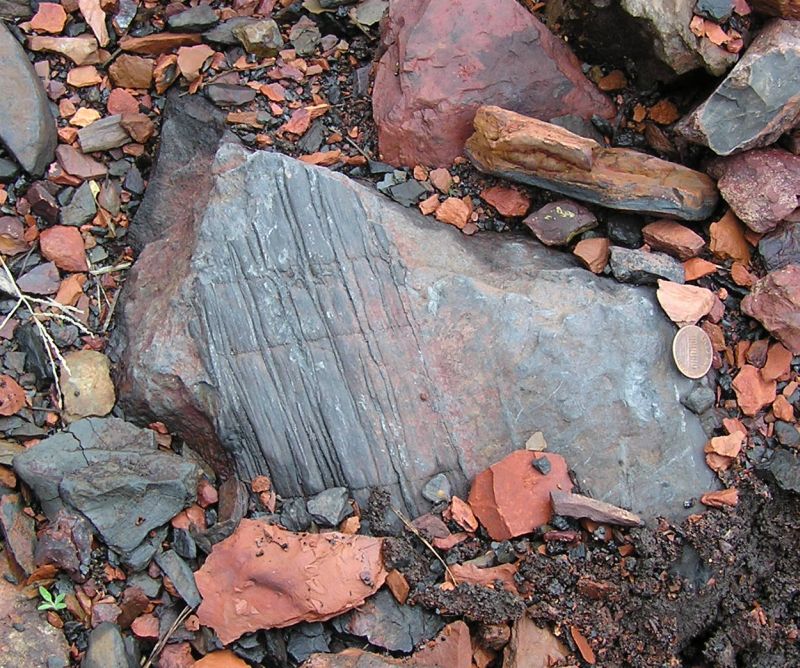
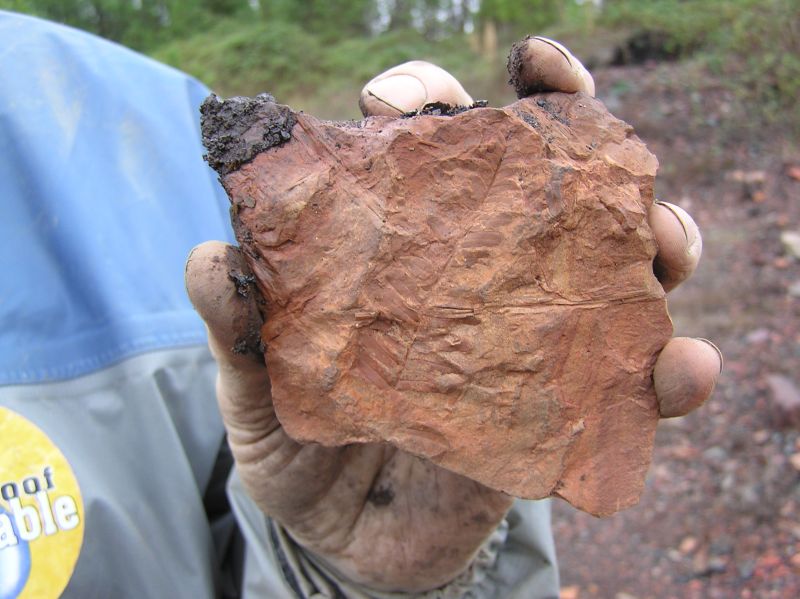
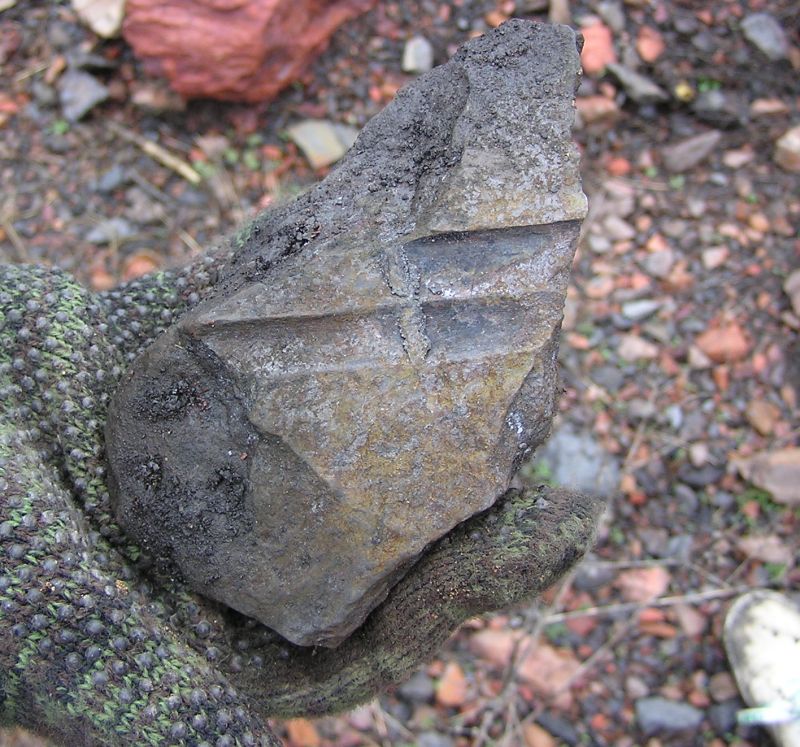
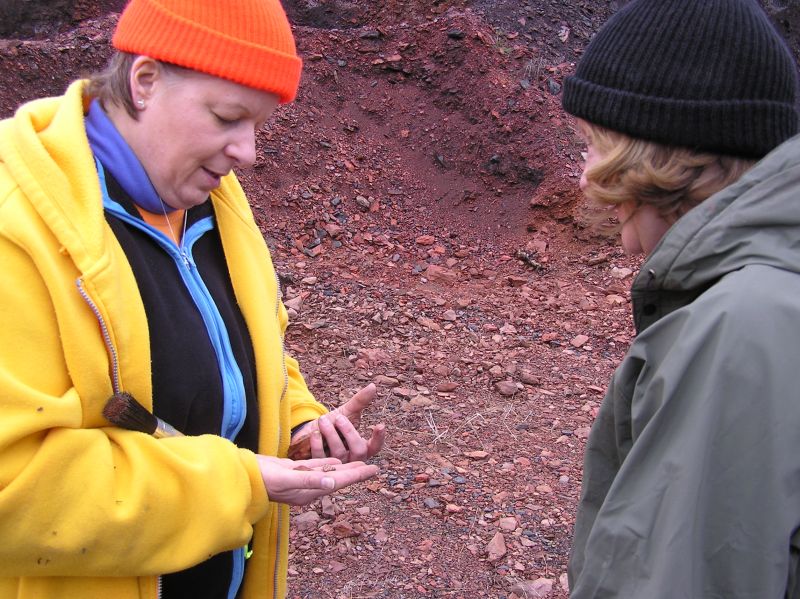
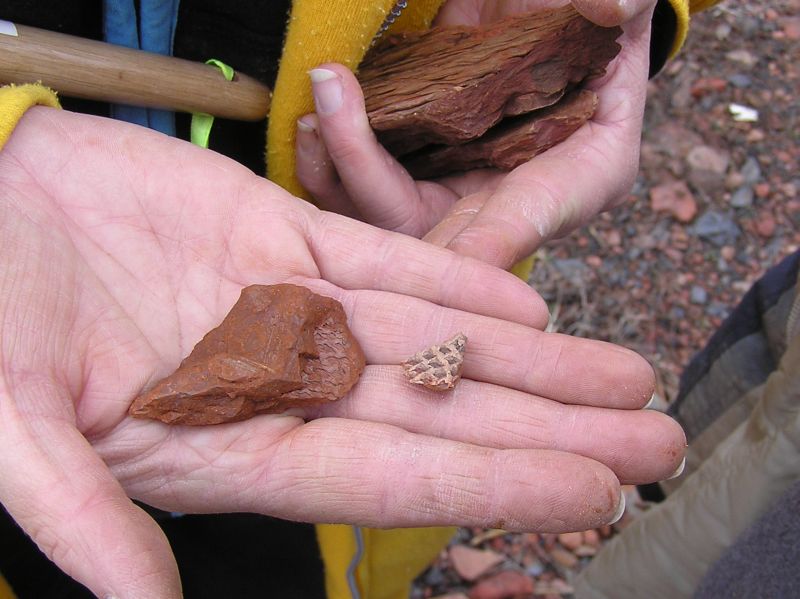
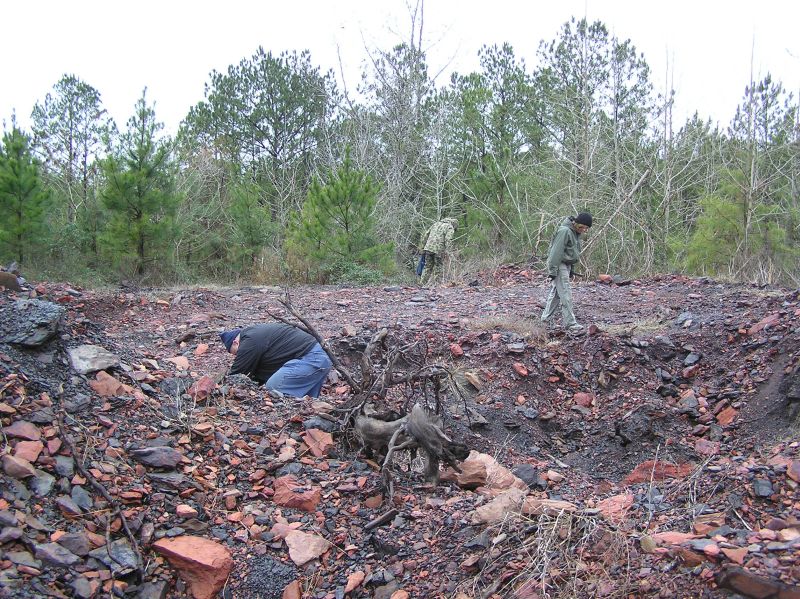
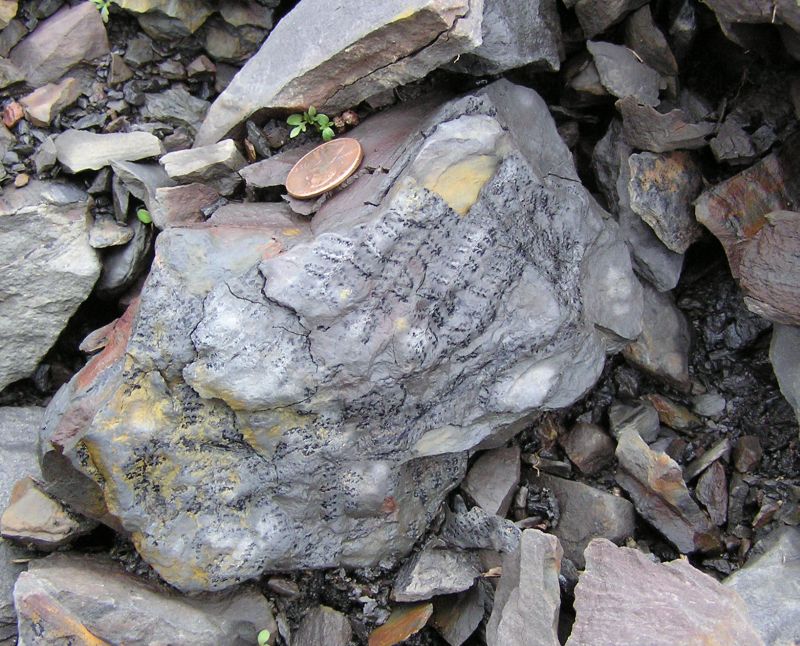
Nice fern, possibly Sphenopteris.
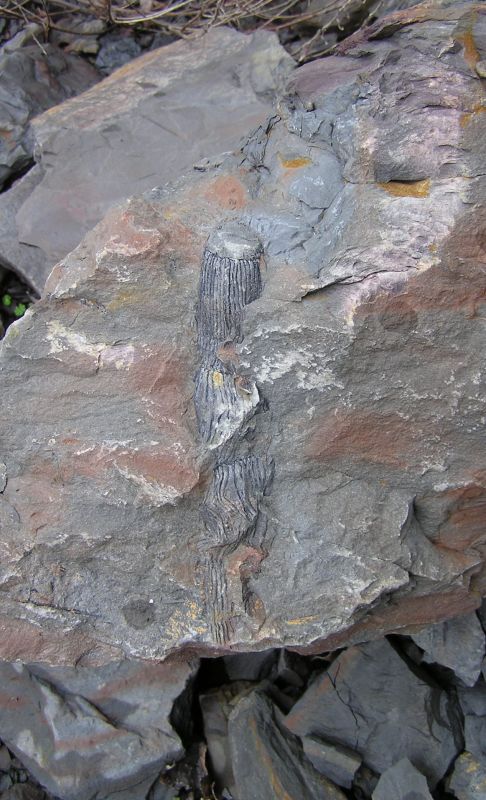
Calamites stem cast.
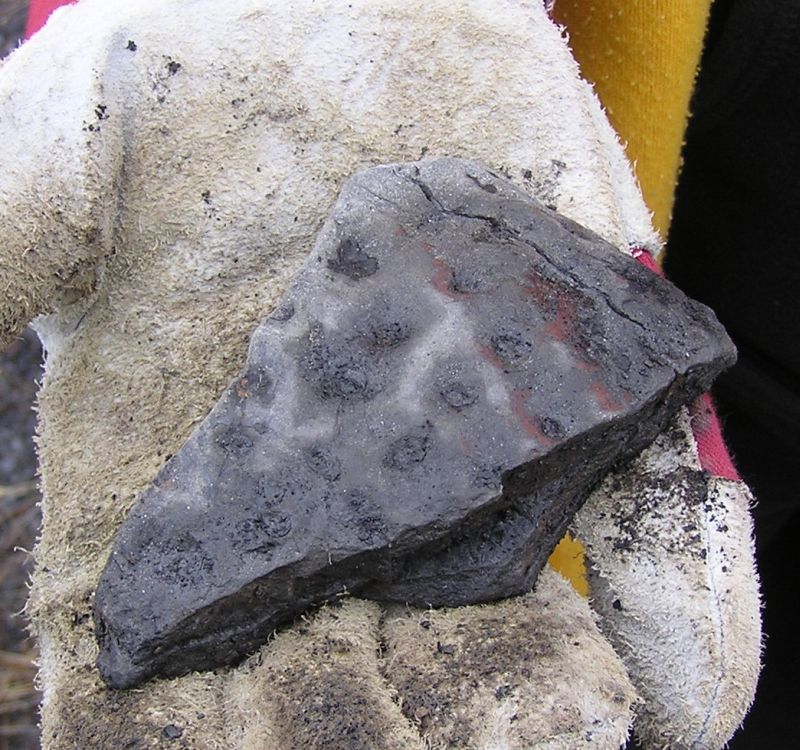
Probably Stigmaria, a lycopod root.
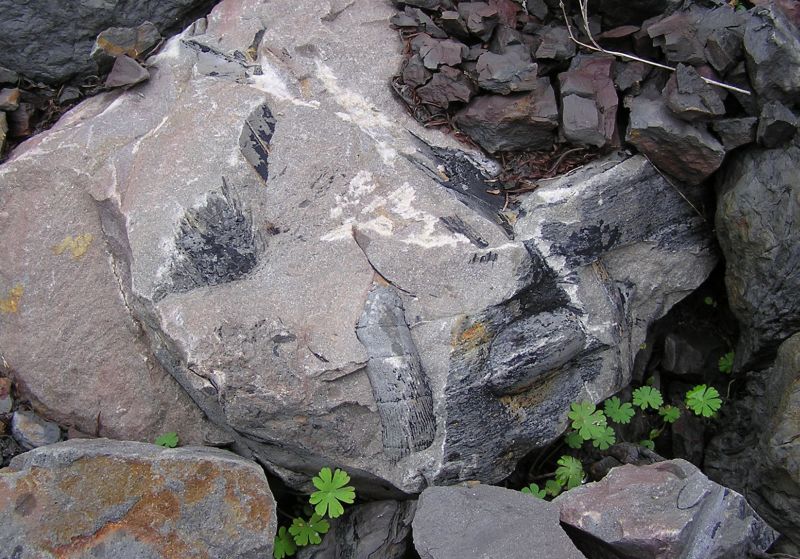
Calamites stem cast.
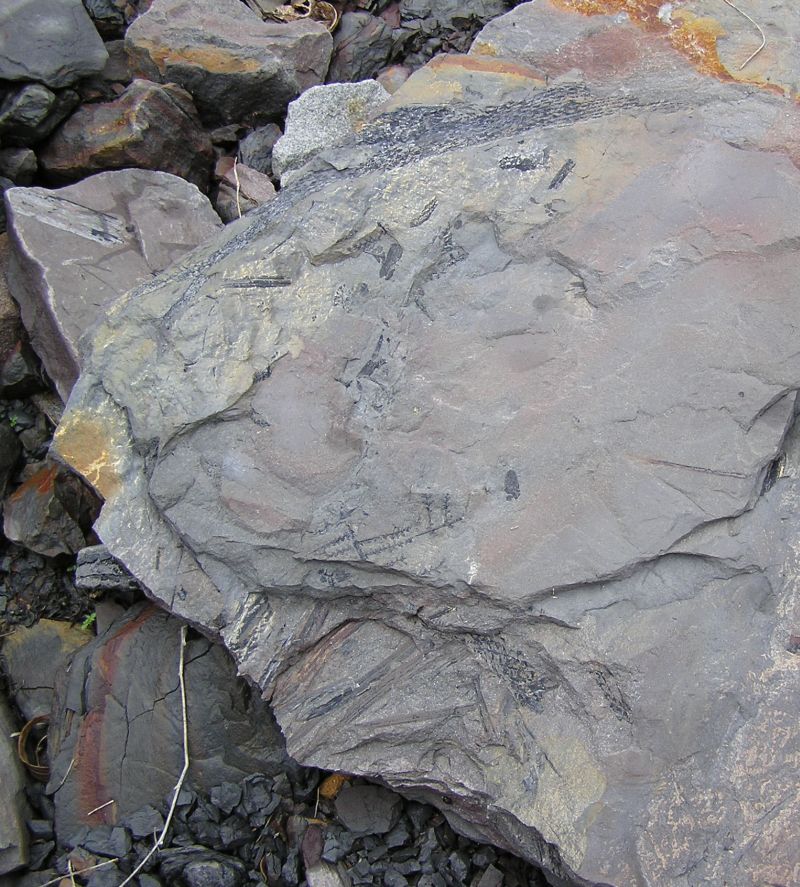
Tree fern outer stem covering and fern-like leaves, probably Sphenopteris.
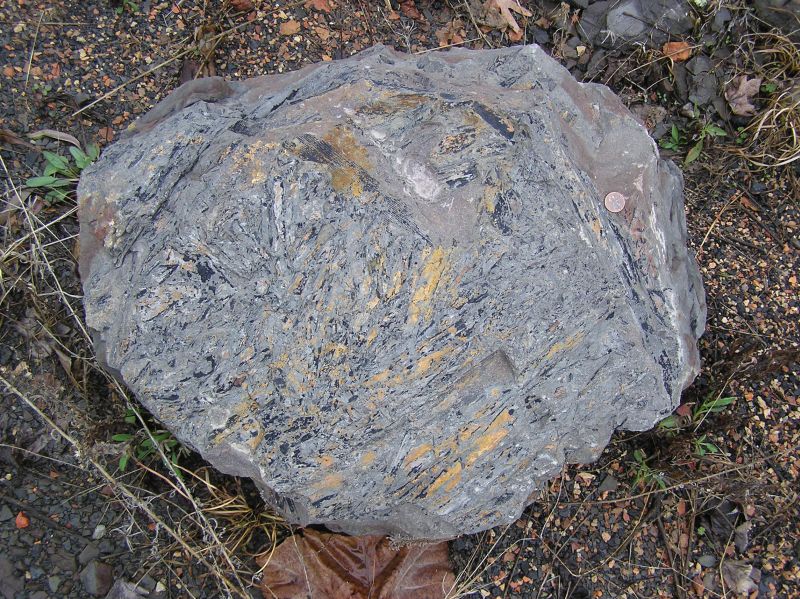
A hash of leaves and stems.
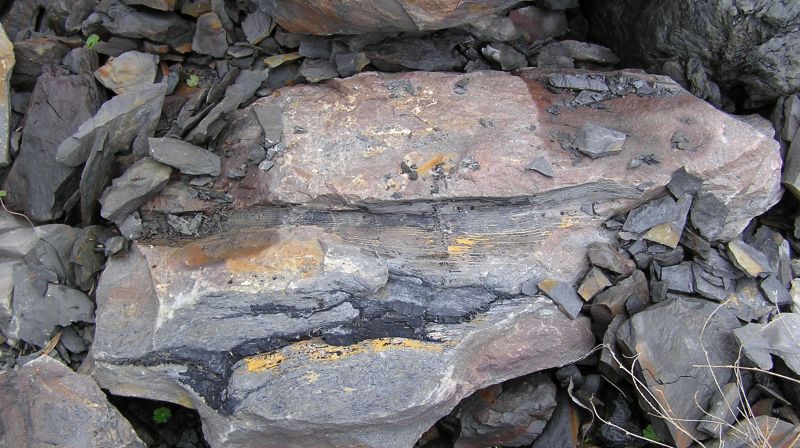
Calamites stem cast.
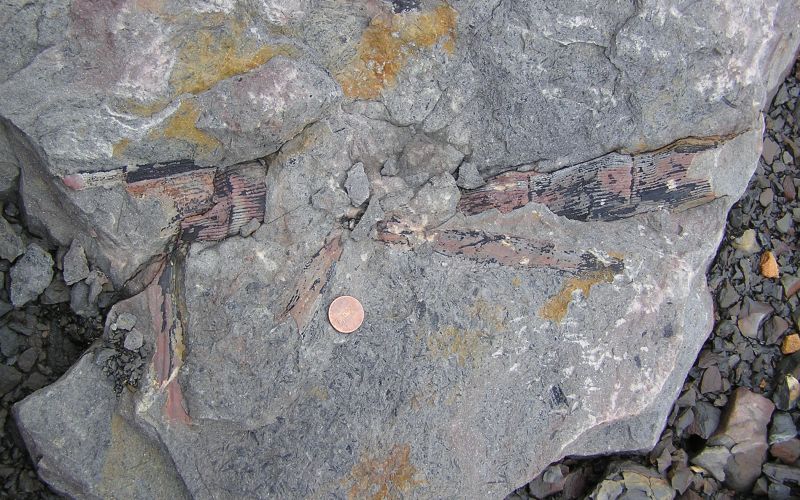
Nice calamites stem.
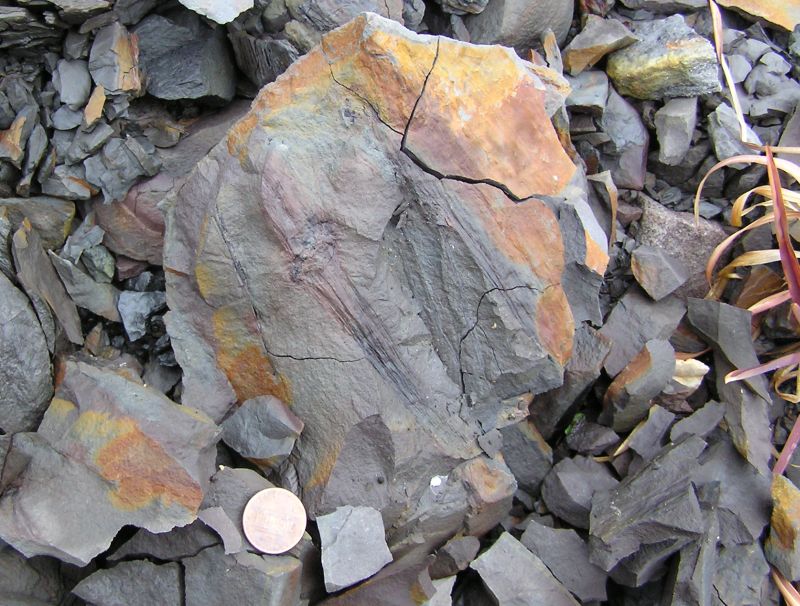
November 24, 2002 - Bibb Co, AL
This months trip was to a graptolite site in Bibb County, Alabama. This is the Athens Shale formation (Ordovician age). Graptolites are found from the Cambrian to the Carboniferous, and are an extinct group of Paleozoic colonial organisms. They are usually found as thin carbonized films in various shales or limestones.
We made several scouting stops also, one at a reclaimed strip mine, where we found the old high wall, with lots of collectible fossils well away from the "danger" area.
March 31, 2001 - Bibb Co, AL
BPS members collected at a Bibb county quarry and nearby graptolite site this month.
November 20, 1999 - Bibb Co, AL
|
This Saturday field trip was the first visit even by veteran BPS members to a quarry located in north Bibb County. The rocks from this quarry have been used as rip-rap at several highway locations, the best ones I know of being on a ramp at Exit 79 and between Exits 77 and 79 on I20/59 near Tuscaloosa. |
The trip was attended by 20-25 BPS members and guests on the first rainy day we had in nearly three weeks. This quarry is a largely abandoned location where rocks of middle Ordovician age (460-480 million years) have been exposed. The rock formations at this site are part of the well known Chickamauga Limestone Group. The main quarry pit is now a small lake filled with deep-looking water having a strong aquamarine color. The lake is surrounded by steep cut cliffs. Rocks are scattered in large piles around a wide area near the lake, and it was among these piles that BPS members searched for fossils of mostly marine animals. In spite of the vastness of the area, it took some tenacity to find fossils since fossiliferous rocks were not that common. |
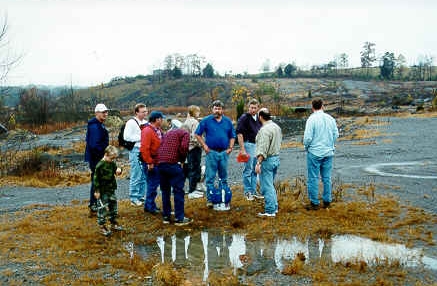 |
| Fig. 2 - Group discussing strategy for exploring the area. |
|---|
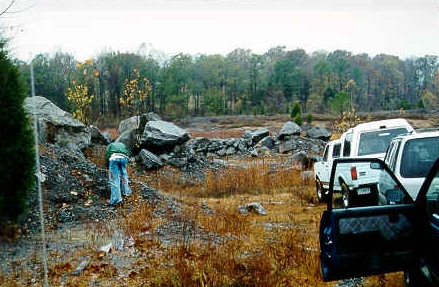 |
| Fig. 3 - View towards rock piles around the lake. |
Apparently, it is the fossils themselves that tell us the age of the rocks at this site. According to Prof. Carl Stock of the University of Alabama Department of Geology, the main index fossils are conodonts, which are very small, sometimes cone-like objects whose nature is not well understood. I am not sure that any of us noticed such fossils, but a magnifier would probably be needed to see them in any case. More obvious index fossils found in quarry rocks are brachiopods. According to R. Wixon (University of Alabama master's thesis, 1984), Ordovician brachiopods are good index fossils because of their abundance worldwide and the short period of their evolutionary timescale. Well-preserved brachiopods of clear middle Ordovician age are found at the quarry and at the I20/59 sites.
Many of the brachiopods that we found at the quarry appear to belong to the order Strophomenida which, according to The Fossil Book by Rich, Rich, Fenton, and Fenton (1996), are frequently referred to as "petrified butterflies". There are many genera and species in this order of articulate brachiopods, and I could only identify a few in the rocks that I personally picked up, based on illustrations in Wixon's thesis and Volume H of the Treatise on Invertebrate Paleontology (Moore, editor, 1965). A few are shown in the illustrations here. Larry Hensley found a large slab covered with brachiopod shells mostly about 1 cm in diameter each (see photo). Several of us managed to hammer away at this large rock and get some pieces of it. Many of the brachiopods on this slab appear to be of the genus Sowerbyella. |
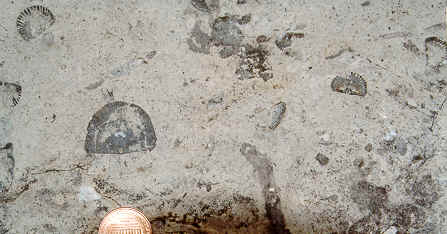 |
| Fig. 6 - Medium-sized brachiopod, probably of genus Rafinesquina, with smaller Hesperorthis australis brachiopods to upper right and left |
|---|
|
Larger brachiopods about 2.5 cm or so in diameter seemed less abundant than the 1cm or smaller pieces. The one I show here, shaped sort of like a tombstone, is probably of the genus Strophomenus or, more likely, Rafinesquina. The largest brachiopod I found is more than 3cm in diameter, and may be of the genus Tetraphalerella, whose members can get this large according to Wixon. Other fossils found include the stems of crinoids, random stem plates of dis-assembled crinoids, bryozoans, parts of trilobites and, I heard, cystoids. Trace fossils of worm burrows were actually among the easiest fossils to find at this site. A large slab covered with criss-crossing tracks is shown here. Don McDonald also showed me what he thought was the end of a horn coral, and Vicki Lais showed several of us a very large rock having some interesting spiral-shaped fossils that we could not identify. Apparently, someone had previously used a rock saw to cut out a piece of this same rock. |
|
|
Although it was not easy finding fossils at this site, it was clear that everyone who attended the field trip had an enjoyable time. The area was interesting and the rocks mysterious, being older than most of those exposed in regions north and south of the site. The key to success at a site like this is to have a lot of time to explore and to be prepared. I regret that I had not studied any of the books I mention above until AFTER I got home! --Edited by Vicki Lais |
Photos by Larry Hensley
|
|
|
|
|
|
|
|
|
|
|
